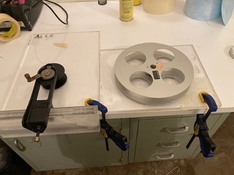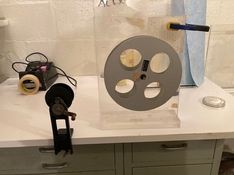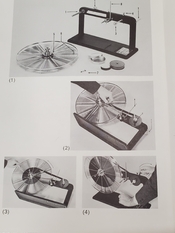Actually, the 100 foot spools of 35mm were designed for volume portrait studio and identification cameras that took 100 foot rolls, but were in more recent times re-purposed for amateur use.
And the equipment used for creating them is old and expensive to operate and inefficient - at least Eastman Kodak's equipment is.
Well they were used by both.
The B&H Eyemo 35mm camera came out in 1925, ostensibly as an amateur camera, but were quickly pressed into service by Hollywood for special shot use in aerial stunts, crash cams and other specialty shots.
1 minute of screen time is more useful than most imagine, especially in rapid paced action sequences.
But the 100 foot daylight loads were used for many applications such as Matt outlined, so I am unsure which came first...
I remember as a kid that some banks had a system that used 16 or 35mm for recording checks you deposited; you endorsed the back and then the teller placed it on a copy-stand like contraption that had two lenses. One of the lenses took an exposure of the check and one was oriented toward the customer and photographed them as well on what I assume was the same frame of film.










